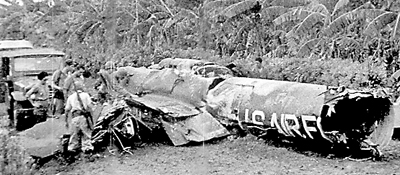Sunday Times 2
The Cuban missile crisis at 50
CAMBRIDGE – This month marks the 50th anniversary of the Cuban missile crisis – those 13 days in October 1962 that were probably the closest the world has come to a major nuclear war. President John F. Kennedy had publicly warned the Soviet Union not to introduce offensive missiles into Cuba. But Soviet leader Nikita Khrushchev decided to cross Kennedy’s red line surreptitiously and confront the Americans with a fait accompli. When an American surveillance plane discovered the missiles, the crisis erupted.
Some of Kennedy’s advisers urged an air strike and invasion to destroy the missiles. Kennedy mobilised troops, but also bought time by announcing a naval blockade of Cuba. The crisis subsided when Soviet ships carrying additional missiles turned back, and Khrushchev agreed to remove the existing missiles from the island. As then US Secretary of State Dean Rusk put it: “We were eyeball to eyeball, and I think the other fellow just blinked.”

At first glance, this was a rational and predictable outcome. The United States had a 17-to-1 advantage in nuclear weaponry. The Soviets were simply outgunned.
And yet the US did not preemptively attack Soviet missile sites, which were relatively vulnerable, because the risk that even one or two of the Soviet missiles would be fired at an American city was enough to deter a first strike. In addition, both Kennedy and Khrushchev feared that rational strategies and careful calculation might spin out of control. Khrushchev offered a vivid metaphor in one of his letters to Kennedy: “We and you ought not now to pull on the ends of the rope in which you have tied the knot of war.”
In 1987, I was part of a group of scholars that met at Harvard University with Kennedy’s surviving advisers to study the crisis. Robert McNamara, Kennedy’s secretary of defence, said he became more cautious as the crisis unfolded. At the time, he thought that the probability of nuclear war resulting from the crisis might have been one in 50 (though he rated the risk much higher after he learned in the 1990s that the Soviets had already delivered nuclear weapons to Cuba).
Douglas Dillon, Kennedy’s treasury secretary, said he thought that the risk of nuclear war had been about zero. He did not see how the situation could possibly have escalated to nuclear war, and thus had been willing to push the Soviets harder and to take more risks than McNamara was. General Maxwell Taylor, the chairman of the Joint Chiefs of Staff, also believed that the risk of nuclear war was low, and he complained that the US let the Soviet Union off too easily. He felt that the Americans should have removed the Castro regime.
But the risks of losing control of the situation weighed heavily on Kennedy, too, which is why he took a more prudent position than some of his advisers would have liked. The moral of the story is that a little nuclear deterrence goes a long way.
Nonetheless, there are still ambiguities about the missile crisis that make it difficult to attribute the outcome entirely to the nuclear component.
The public consensus was that the US won. But how much the US won, and why it won, is hard to determine.
There are at least two possible explanations of the outcome, in addition to Soviet acquiescence to America’s superior nuclear firepower. One focuses on the importance of the two superpowers’ relative stakes in the crisis: the US not only had a greater stake in neighbouring Cuba than the Soviets did, but could also bring conventional forces to bear. The naval blockade and the possibility of a US invasion strengthened the credibility of American deterrence, placing the psychological burden on the Soviets.
The other explanation questions the very premise that the Cuban missile crisis was an outright US victory. The Americans had three options: a “shoot-out” (bomb the missile sites); a “squeeze out” (blockade Cuba to convince the Soviets to withdraw the missiles); and a “buyout” (give the Soviets something they want).

The wreckage of the U-2 aircraft shot down by soviet anti-aircraft forces. AFP
For a long time, the participants said little about the buyout aspects of the solution. But subsequent evidence suggests that a quiet US promise to remove its obsolete missiles from Turkey and Italy was probably more important than was thought at the time (the US also gave a public assurance that it would not invade Cuba).
We can conclude that nuclear deterrence mattered in the crisis, and that the nuclear dimension certainly figured in Kennedy’s thinking. But it was not the ratio of nuclear weapons that mattered so much as the fear that even a few nuclear weapons would wreak intolerable devastation.
How real were these risks? On October 27, 1962, just after Soviet forces in Cuba shot down a US surveillance plane (killing the pilot), a similar plane taking routine air samples near Alaska inadvertently violated Soviet air space in Siberia. Fortunately, it was not shot down. But, even more serious, unbeknownst to the Americans, Soviet forces in Cuba had been instructed to repel a US invasion, and had been authorised to use their tactical nuclear weapons to do so.
It is hard to imagine that such a nuclear attack would have remained merely tactical. Kenneth Waltz, an American scholar, recently published an article entitled “Why Iran Should Get the Bomb.” In a rational, predictable world, such an outcome might produce stability. In the real world, the Cuban missile crisis suggests that it might not. As McNamara put it, “We lucked out.”
Joseph Nye, a professor at Harvard, is the author of The Future of Power. Copyright: Project Syndicate, 2012. Exclusive to the Sunday Times
Follow @timesonlinelk
comments powered by Disqus




















